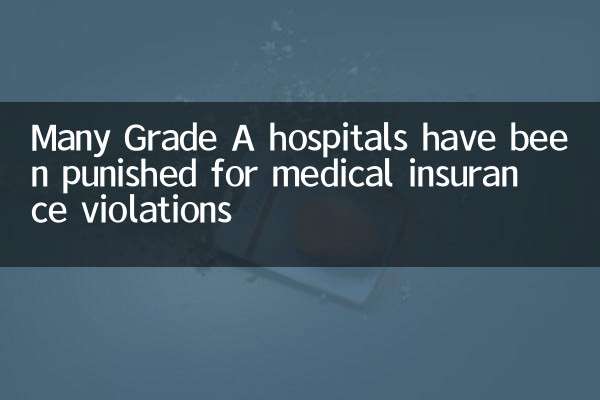An integrated health service model covering hospitals, communities, families and individuals is being explored
In recent years, with the intensification of population aging and the increase in the incidence of chronic diseases, traditional medical models have been unable to meet diversified health needs. To this end, an integrated health service model integrating hospitals, communities, families and individual resources is being explored and promoted nationwide. This model is supported by digital technology and big data, aiming to achieve seamless connection and precise coverage of health services. The following are related topics and structured data analysis that have been hotly discussed across the Internet in the past 10 days.
1. Check out the hot topics on the entire network

In the past 10 days, the discussion on the integrated health service model has focused on the following directions:
| Topic keywords | Discussion popularity (index) | Focus mainly on groups |
|---|---|---|
| Family doctor contract service | 85,200 | Middle-aged and elderly people and chronic diseases |
| Remote diagnosis and treatment in Internet hospitals | 72,500 | Workplace people and residents in remote areas |
| Community Health Management Station | 68,300 | Community residents and primary medical institutions |
| Smart wearable device health monitoring | 59,800 | Young people, technology enthusiasts |
2. Four core scenarios of integrated health services
1.Hospital:As a hub of professional medical resources, hospitals realize tiered diagnosis and treatment and data sharing through Internet platforms. For example, Grade A hospitals cooperate with grassroots hospitals to carry out remote consultations to reduce the number of patients running around.
2.Community:The community health service center undertakes basic diagnosis and treatment, health education and chronic disease management functions. Many places have piloted "health stations" to provide free testing services such as blood pressure and blood sugar.
3.family:The family doctor team provides residents with long-term health management through contract services, combining smart devices to monitor health data of high-risk groups in real time.
4.individual:Relying on mobile applications and wearable devices, individuals can record health indicators and obtain customized suggestions at any time to form the habit of active health management.
3. Practical cases and data effectiveness
The following are the phased results of some pilot areas:
| Pilot areas | Service mode | Covering the crowd | Key results |
|---|---|---|---|
| Shanghai | "1+1+1" Family Doctor Signing a Contract | More than 8 million people | High blood pressure control rate increased by 12% |
| Hangzhou City | Community AI Health Assistant | 50 communities | Diabetes screening efficiency increases by 30% |
| Chengdu | Internet hospital + pharmacy linkage | 2 million online users | Revisiting medication time is shortened to 20 minutes |
4. Challenges and future prospects
Although the integrated model shows its potential, it still faces challenges such as data security and uneven resource allocation. The next step is to strengthen policy support and technical research and development, such as:
- Improve health data privacy protection regulations;
- Promote skills training for primary medical personnel;
- Develop more inclusive smart health terminals.
Experts predict that in the next five years, this model is expected to cover more than 60% of the country's cities and gradually extend to rural areas, ultimately realizing the vision of "full life cycle health management".

check the details

check the details